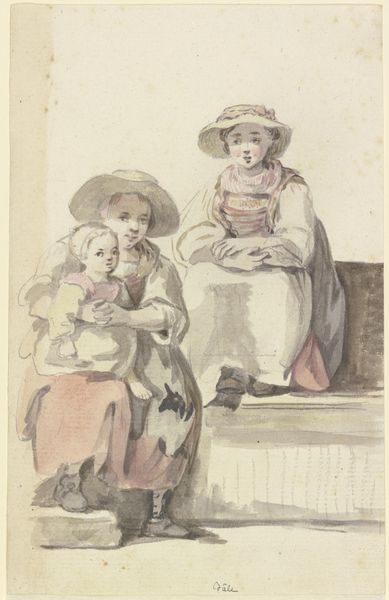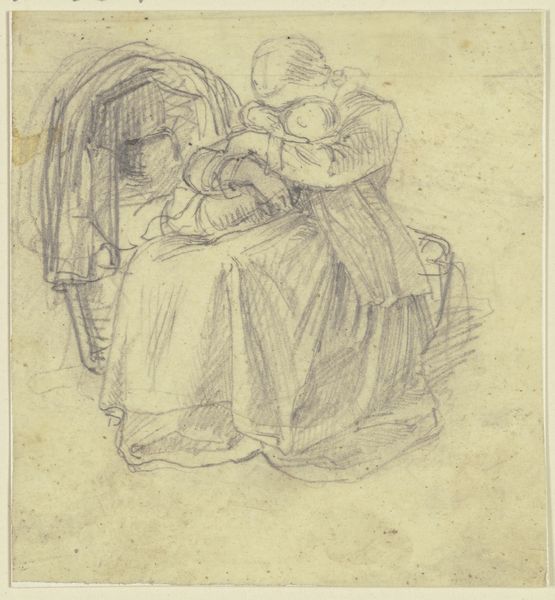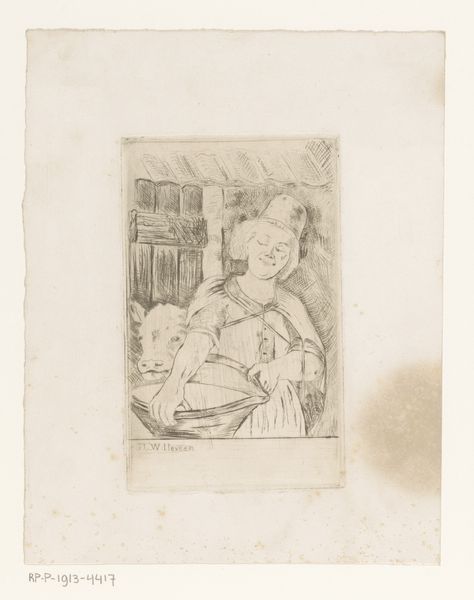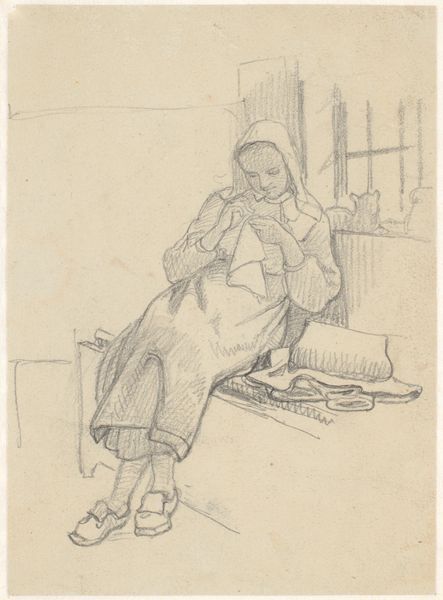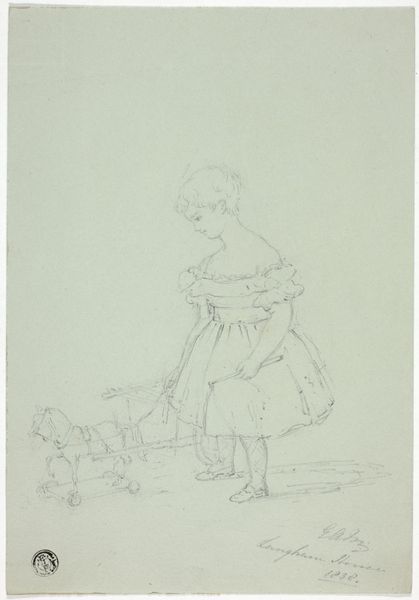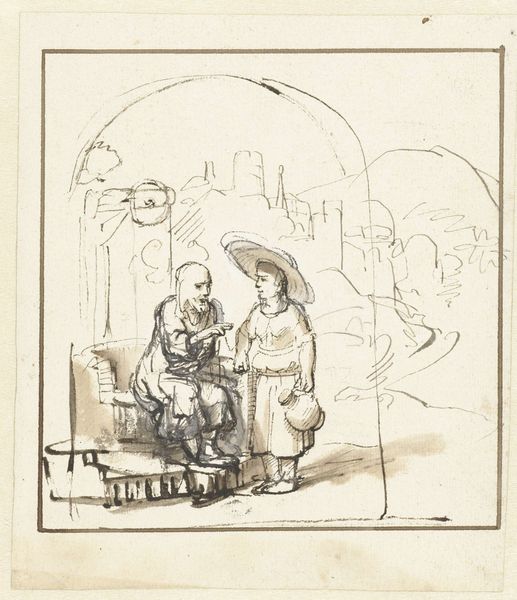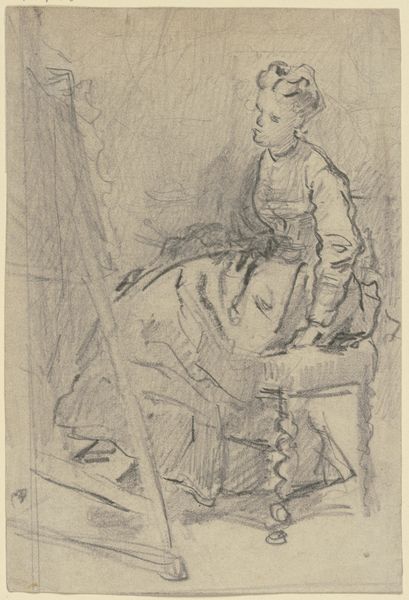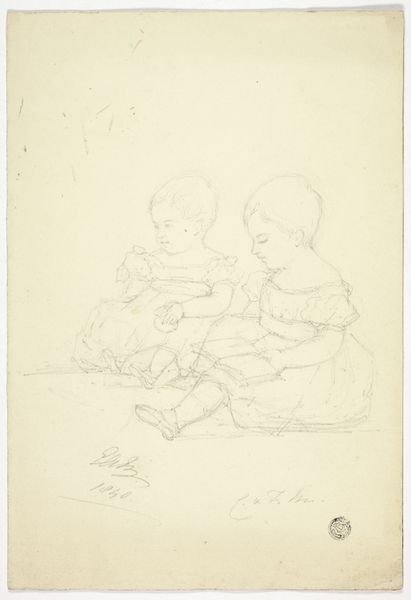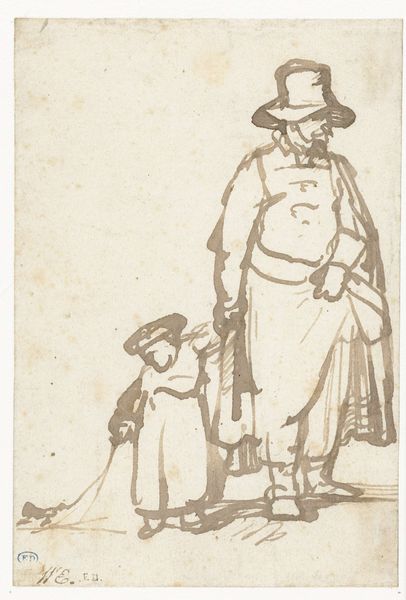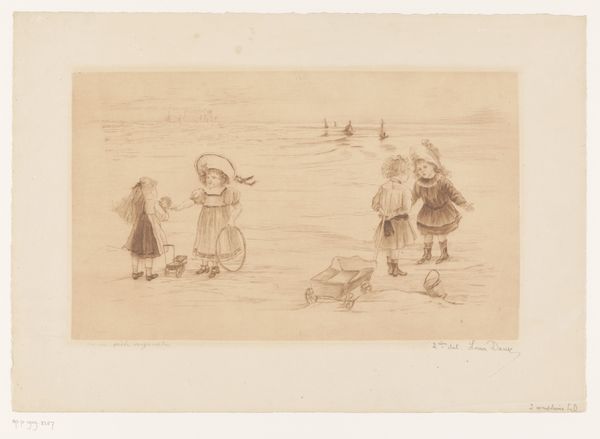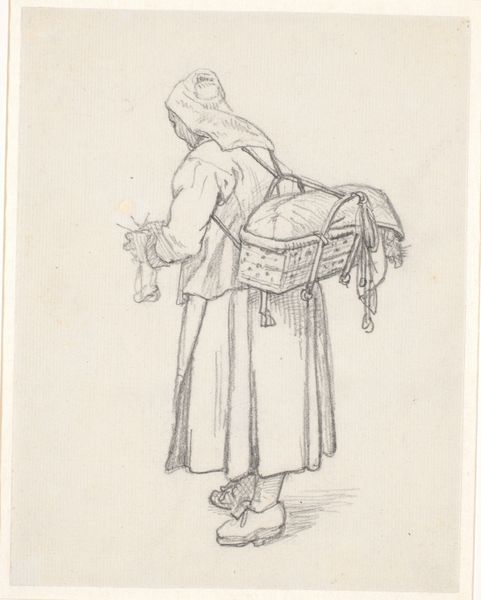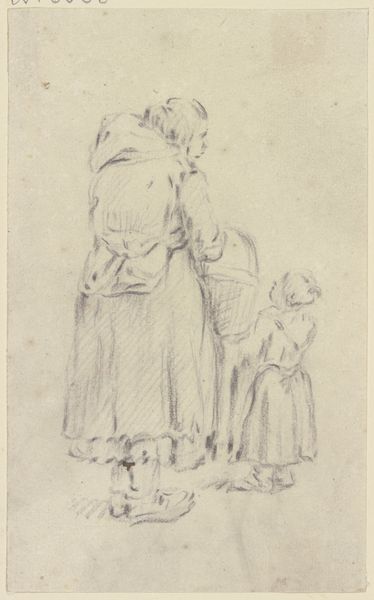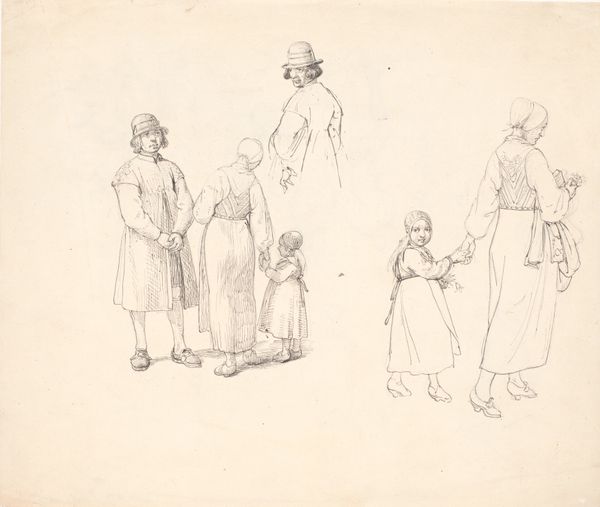
drawing
#
drawing
#
toned paper
#
light pencil work
#
16_19th-century
#
quirky sketch
#
pencil sketch
#
personal sketchbook
#
german
#
sketchbook drawing
#
watercolour illustration
#
sketchbook art
#
fantasy sketch
#
watercolor
Copyright: Public Domain
Curator: This charming pencil sketch is called "Drei Kinder mit Leiterwagen," or "Three Children with a Wagon," by Jacob Happ. It resides here at the Städel Museum. Editor: It feels so fragile and ephemeral, doesn't it? A captured moment, almost like a faded memory. The soft colors and delicate lines give it an intimate quality, like stumbling upon a private scene. Curator: Exactly. Happ's draftsmanship offers insight into 19th-century German life, depicting children and everyday scenes in a way that reflects societal values regarding childhood innocence and domesticity. The drawing's presence in a museum space also transforms the simple illustration of an ephemeral lived experience into a permanent artwork with cultural meaning. Editor: Yes, that cultural shift is key. I see in the children a visual metaphor for dependence, or perhaps early divisions of labor. Note the figure who appears slightly older holding a baby, with another seemingly doll-like child in the wagon. Are they siblings? Is it meant to portray hierarchy, class difference? Curator: Interesting. I’m more drawn to considering the context in which a study such as this would be created. These sketches were, I suspect, not intended for public display, and such candid captures of life would be valuable in establishing himself among his patrons as capable of documenting the lives of subjects important to them, specifically within the framework of growing industrialism and associated exploitation that saw a rise of sentimentality about childhood. Editor: I see the point about patronage. And the style definitely has a "period" aesthetic. But let’s also think intersectionally: Whose stories get documented? Who is relegated to “subjects” within artworks rather than seen as active participants or creators? I wonder how those considerations play into Happ’s compositional decisions here. Curator: That’s a valuable lens to bring to it, for certain. Art isn’t produced in a vacuum. This exploration is just one possible narrative stemming from Happ's sketch, which enriches our understanding of the social conditions of 19th-century Germany and provides a critical perspective on cultural representations. Editor: Absolutely, and by confronting these questions, we become more aware of how artworks reflect and perpetuate existing social hierarchies and begin to interrogate their validity today. I like that challenge.
Comments
No comments
Be the first to comment and join the conversation on the ultimate creative platform.
